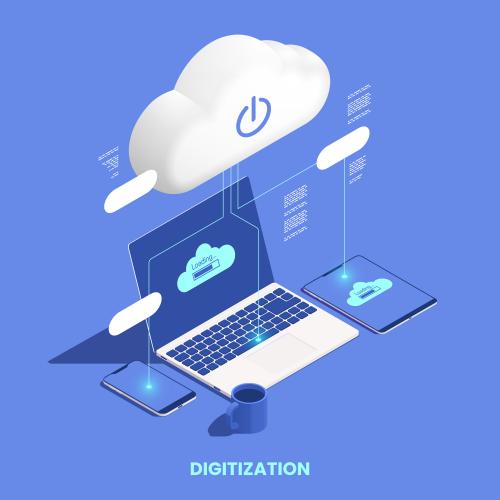How Forensic Examination of Mobile Phones Work!

In an era dominated by technology, mobile phones have become integral to our daily lives, storing a treasure trove of information that goes beyond mere communication. Mobile devices can hold crucial evidence in legal investigations from personal messages to geolocation data. The forensic examination of mobile phones has thus emerged as a sophisticated and indispensable tool for law enforcement and digital investigators. In this write-up, we will delve into the intricacies of forensic examination, exploring its methodologies, challenges, and the crucial role it plays in modern criminal investigations.

The Need for Mobile Forensics
As mobile phones have become an extension of our identities, they often hold vital clues in criminal investigations. Mobile forensics is the systematic process of extracting, analyzing, and preserving digital evidence from mobile devices. This includes smartphones, tablets, and other portable devices, each of which may contain a wealth of information crucial to solving crimes ranging from financial fraud to cybercrimes and even violent offenses.
Data Types Analyzed in Mobile Forensics
Mobile forensic examinations are not limited to call logs and text messages. Digital investigators dive deep into various data types to uncover evidence. This includes:
- Call Records and Text Messages: Uncovering communication patterns and potential contacts.
- Media Files: Analyzing photos, videos, and audio recordings for evidentiary value.
- Location Data: Examining GPS logs and geolocation information to establish timelines and connections.
- App Data: Scrutinizing data from OSINT social media apps and tools, messaging platforms, and other applications for relevant information.
- Web Browsing History: Investigating internet activities for potential leads.
- Device Logs: Extract system logs to trace user activities on the device.
- Cloud Storage: Analyzing data stored in cloud services linked to the device.
Forensic Methodologies
Forensic examination of mobile phones involves a structured methodology to ensure the integrity of the evidence. Key steps in this process include:
- Device Seizure: Ensuring a proper chain of custody, investigators carefully seize and document the state of the mobile device.
- Data Extraction: Utilizing specialized tools, forensic experts extract data from the device. This process can be physical (directly from the device's memory) or logical (extracting data through device interfaces).
- Data Analysis: Investigators analyze the extracted data, using forensic software to interpret and organize the information.
- Reporting: A detailed forensic report is generated, documenting findings, methods, and conclusions drawn from the examination. This report is often presented in legal proceedings.
Tools & Technologies
As mobile devices evolve, so do the tools used in forensic examinations. Leading forensic software includes:
- Cellebrite UFED: Widely used for data extraction from various devices, including smartphones, Cellebrite UFED supports a broad range of file systems and encryption methods.
- XRY by MSAB: Known for its versatility, XRY is compatible with a wide array of devices and enables extraction from both physical and logical sources.
- Oxygen Forensic Detective: This tool stands out for its comprehensive analysis capabilities, covering device, cloud, and app data.
- GrayKey: Focused on iOS devices, GrayKey is known for its effectiveness in bypassing iPhone passcodes to extract data.
Challenges in Mobile Forensics
While mobile forensics has become a powerful investigative tool, it is not without challenges. Key issues include:
- Encryption: The widespread use of encryption on modern smartphones poses a significant challenge. Decrypting protected data requires advanced techniques and tools.
- Data Overwriting: Continuous use of a device may lead to the overwriting of data, potentially erasing critical evidence.
- Cloud Challenges: As more data migrates to cloud storage, accessing information stored remotely presents additional hurdles for forensic examiners.
- Rapid Technological Changes: The ever-evolving landscape of mobile technology requires forensic experts to stay abreast of new devices, operating systems, and security features.
Legal & Ethical Considerations
Mobile forensics is subject to legal and ethical guidelines to ensure the admissibility of evidence in court. Investigators must adhere to strict procedures to maintain the integrity of the data and protect individuals' privacy rights. Obtaining proper authorization, maintaining a chain of custody, and respecting legal boundaries are paramount in conducting ethical and legally sound forensic examinations.
Notable Cases Solved through Mobile Forensics
The experts from OSINT social media tools developing teams say Mobile forensics has played a pivotal role in solving high-profile cases, demonstrating its impact on modern criminal investigations. Notable examples include:
- San Bernardino Shooting (2015): The FBI utilized mobile forensics to unlock an iPhone linked to the shooting, sparking a debate on privacy and security.
- Boston Marathon Bombing (2013): Mobile device data provided crucial evidence in identifying and apprehending the perpetrators.
- Jodi Arias Trial (2013): Text messages and call records from the defendant's phone played a significant role in building the case.
Future Trends in Mobile Forensics
As technology continues to advance, the field of mobile forensics is evolving to meet new challenges. Key trends include:
- AI and Machine Learning: Implementing artificial intelligence and machine learning algorithms enhances the efficiency of data analysis, aiding investigators in identifying patterns and anomalies.
- Blockchain Analysis: With the rise of cryptocurrency-related crimes, forensic experts are focusing on blockchain analysis to trace financial transactions.
- Cloud Forensics: As more data migrates to the cloud, forensic experts are developing specialized skills to navigate and extract information from cloud storage services.
In conclusion, the forensic examination of mobile phones has become a cornerstone in modern criminal investigations. As technology advances and criminals become more sophisticated, forensic experts must continuously refine their methodologies to uncover the digital trails that can lead to justice. Mobile forensics not only uncovers evidence but also underscores the delicate balance between privacy rights and the pursuit of truth in the digital age.






Comments